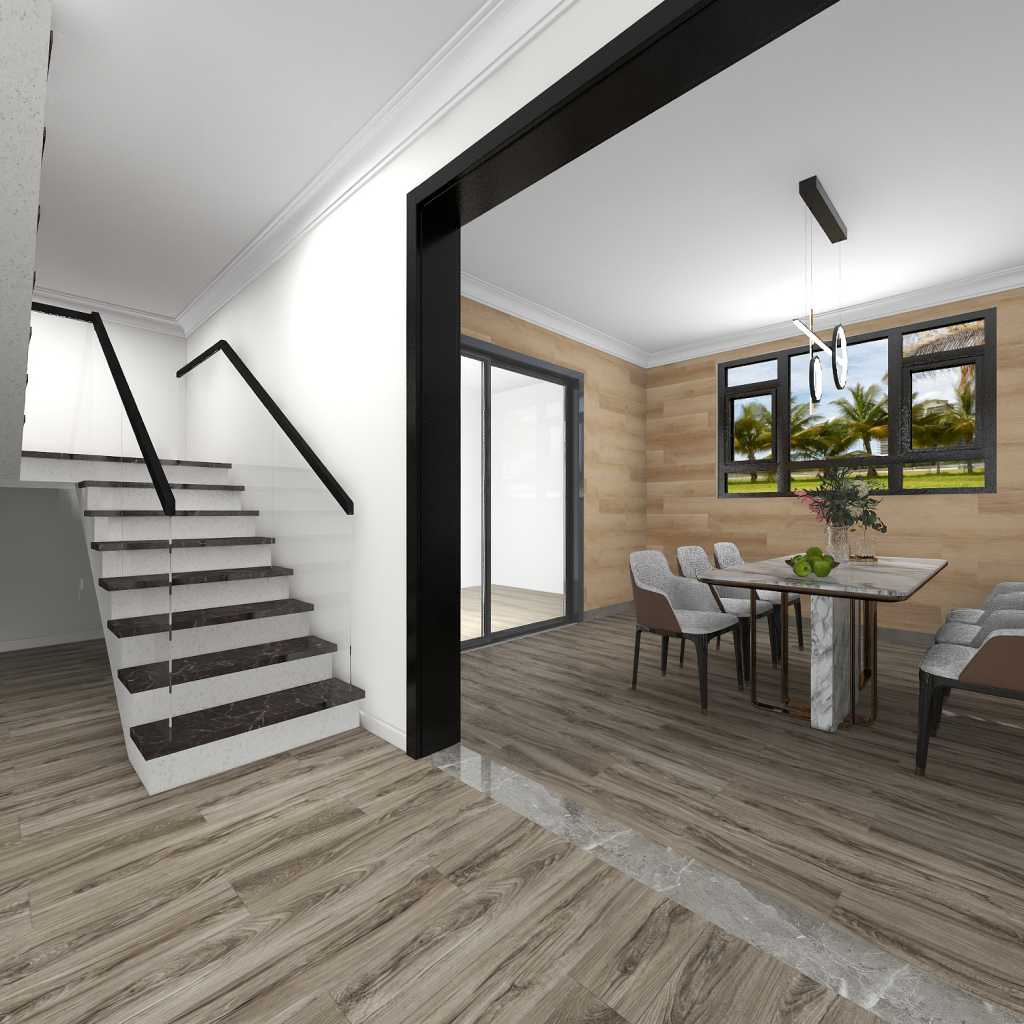
Waterproof flooring is the ultimate solution for wet areas prone to spills, splashes, and moisture. Imagine a kitchen where spilled juice doesn’t cause panic, a bathroom where water doesn’t seep into the subfloor, and a laundry room that always feels clean and dry. These are the realities waterproof flooring offers. Many homeowners and businesses face the constant worry of water damage in high-moisture areas. Mold, mildew, warping, and costly repairs are common consequences of neglecting proper flooring choices. This article will explore the many benefits of investing in waterproof flooring, helping you make an informed decision that protects your property and enhances its value. We’ll cover everything from its water-resistant properties and hygiene benefits to its aesthetic appeal and long-term cost-efficacy. Let’s dive in!
Protecting Your Home from Water Damage
Water damage is a significant concern in wet areas like bathrooms, kitchens, and laundry rooms. It can lead to structural problems, mold growth, and expensive repairs. Waterproof flooring offers an essential barrier against these problems. Unlike traditional flooring materials like wood or carpets, waterproof flooring is designed to resist water penetration. This resilience prevents water from seeping into the subfloor, safeguarding your home’s structure and preventing costly repairs down the line.
Preventing Mold and Mildew Growth
Mold and mildew thrive in damp environments. These fungi not only cause unpleasant odors and unsightly stains but can also pose serious health risks, especially for individuals with allergies or respiratory problems. Waterproof flooring minimizes moisture buildup, creating an environment that’s inhospitable to mold and mildew. This helps to maintain a healthier and more pleasant living space.
Structural Integrity Protection
Water damage can compromise the structural integrity of your home. When water seeps into the subfloor, it can cause warping, rotting, and even collapse. Waterproof flooring acts as a shield, preventing water from reaching the structural elements of your home. This protection significantly extends the lifespan of your property and saves you from costly structural repairs.
Related Post : The Best Flooring Choices for Open-Concept Spaces
Cost Savings in the Long Run
While the initial cost of waterproof flooring might seem higher than some alternatives, it’s crucial to consider the long-term cost savings. By preventing water damage and the associated repairs, waterproof flooring ends up being a more economical choice in the long run. You avoid the expenses of replacing damaged flooring, repairing structural problems, and dealing with mold remediation.
Enhanced Hygiene and Easy Maintenance
Maintaining hygiene in wet areas is paramount, especially in kitchens and bathrooms. Waterproof flooring excels in this area. Its non-porous surface prevents water and dirt from seeping in, making it incredibly easy to clean and maintain. A quick wipe with a damp cloth is often all that’s needed to keep your floors looking spotless.
Simplified Cleaning Processes
Say goodbye to tedious scrubbing and deep cleaning. Spills and messes are easily cleaned on waterproof flooring. No more worrying about stains setting into the material or causing long-term damage. This simplified cleaning process saves time and effort, allowing you to focus on other crucial tasks.
Resistance to Bacteria and Germs
Waterproof flooring’s non-porous surface helps prevent the growth of bacteria and germs, creating a healthier environment. Unlike porous materials like carpets, waterproof flooring doesn’t trap dirt, dust mites, or allergens, which can trigger allergies and respiratory problems. This is especially crucial in areas where hygiene is critical, such as bathrooms and kitchens.
Durability and Longevity
High-quality waterproof flooring is known for its durability and longevity. It can withstand heavy foot traffic, impacts, and scratches, ensuring that it maintains its appearance and functionality for years to come. This longevity translates into long-term cost savings as you avoid frequent replacements.
Aesthetic Appeal and Design Flexibility
Gone are the days when waterproof flooring was limited to dull and uninspiring options. Today, waterproof flooring comes in a vast array of styles, colors, and textures to complement any design scheme. Whether you’re aiming for a modern, minimalist look or a classic, traditional aesthetic, you’ll find waterproof flooring options to match your vision.
Wide Variety of Styles and Colors
Waterproof flooring manufacturers offer an extensive scope of styles, colors, and patterns, from realistic wood and stone imitations to bold, contemporary designs. You can find options that perfectly match your existing décor or serve as a statement piece in your wet areas.
Seamless Integration with Various Interior Styles
Waterproof flooring integrates seamlessly with various interior design styles. Whether you have a rustic farmhouse, a sleek modern apartment, or a traditional family home, you can find waterproof flooring to fit your aesthetic. Its versatility allows you to achieve a cohesive and stylish look throughout your house.
Enhanced Home Value
Investing in high-quality waterproof flooring can significantly boost the value of your property. Potential buyers appreciate the durability, low-maintenance characteristics, and protection against water damage that waterproof flooring offers. This makes it a smart investment that pays off in the long run.
Types of Waterproof Flooring
Several types of waterproof flooring are available on the industry, each offering unique benefits. Understanding the differences will help you select the optimal option for your specific needs and budget. Consider factors such as cost, durability, maintenance requirements, and aesthetic preferences when making your selection.
Vinyl Flooring
Vinyl flooring is a popular and cost-effective waterproof option. It comes in various designs, thicknesses, and textures, making it suitable for various spaces. Luxury vinyl plank (LVP) and luxury vinyl tile (LVT) are particularly popular due to their realistic wood and stone looks. Vinyl flooring is relatively easy to install and maintain, making it a suitable choice for DIY projects.
Porcelain and Ceramic Tiles
Porcelain and ceramic tiles are another excellent choice for wet areas. They are durable, water-resistant, and easy to clean. These tiles offer a wide scope of styles, colors, and sizes to match any design aesthetic. However, they can be more expensive and require professional installation, which is usually more costly than vinyl installation.
Laminate Flooring with Waterproof Core
While traditional laminate flooring isn’t inherently waterproof, some newer options have a waterproof core that significantly enhances their water resistance. These waterproof laminate floors offer a cost-effective alternative to other waterproof materials. However, they generally aren’t as resistant to moisture as vinyl or porcelain tiles.
Choosing the right type of waterproof flooring will depend largely on your unique needs, budget, and preferences. Consider what style you are trying to achieve, how much you are willing to spend, and how much maintenance you’re willing to put into caring for your new floor.
Installation and Maintenance Tips for Waterproof Flooring
Proper installation and regular maintenance are essential to maximize the lifespan and efficacy of your waterproof flooring. Whether you select to DIY or hire professionals, ensuring correct installation is crucial to prevent issues such as gaps or uneven surfaces that could compromise the flooring’s waterproof properties. Moreover, regular maintenance will preserve the flooring’s appearance and extend its lifespan.
Professional Installation for optimal outcomes
While some waterproof flooring options are relatively easy to install, hiring professional installers is often recommended, particularly for more complex projects. Professionals have the experience and expertise to ensure proper installation, preventing potential issues down the line. This approach minimizes any risk of compromising your flooring’s integrity and lifespan.
Regular Cleaning and Maintenance
Regular cleaning is crucial to maintain the hygiene and appearance of your waterproof flooring. Use a damp mop or cloth to clean spills and dirt promptly. Avoid abrasive cleaners or harsh chemicals, as these can damage the flooring’s surface. Regularly check for any signs of damage or wear and tear and address them promptly.
Addressing Potential Problems
Although waterproof, flooring can still be susceptible to damage from prolonged exposure to water or harsh chemicals. Addressing any problems promptly is crucial to preventing further damage and extending the lifespan of your flooring. Regular inspection and prompt action regarding any issues are crucial.
In conclusion, choosing waterproof flooring for wet areas offers significant benefits. From preventing costly water damage and promoting hygiene to enhancing the aesthetic appeal and longevity of your space, the benefits are undeniable. Investing in waterproof flooring is a smart decision that safeguards your property and improves your quality of life. Don’t hesitate; explore the various options available and transform your wet areas into safe, stylish, and worry-complimentary environments. Consider contacting a flooring specialist today to discuss your needs and find the perfect waterproof flooring solution for your home or business.
